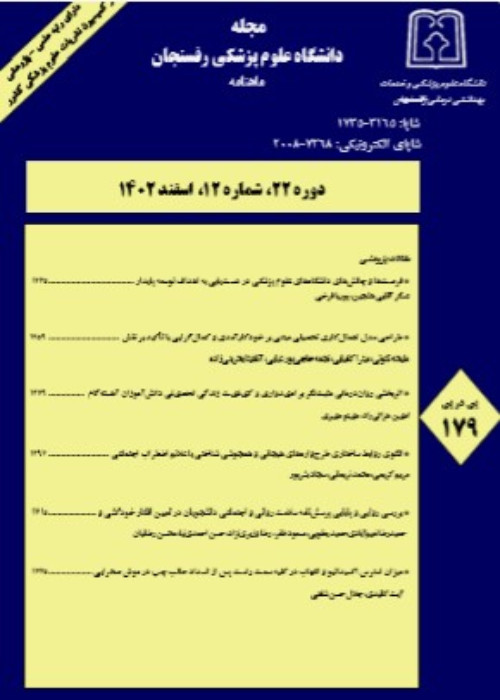Comparison of the Antimicrobial Effect of Garlic Extract with two Intracanal Irrigants on Enterococcus Faecalis
Author(s):
Abstract:
Background And Objectives
It is very important to remove the microorganisms in the root canal before obturation. One of the causes of endodontic treatment failures is the existence of the bacteria responsible for resistant infections, including Enterococcus Faecalis. The aim of this study was to compare the antibacterial effect of the garlic extract with two intracanal irrigants on Enterococcus Faecalis. Materials And Methods
In this in-vitro study, the method of Well Agar Diffusion was used to compare the anti-bacterial effect of pure garlic extract (100%), garlic extract 80%, chlorhexidine 2%, sodium hypochlorite 5.25% and combined chlorhexidine 2% with pure garlic extract. Eighteen plates of Muller-Hinton agar were inoculated with E.faecalis. Each plate had 6 wells for test solutions and one of them was for sterile distilled water as the control. The prepared plates were distributed into aerobic (n=9) and anaerobic (n=9) groups, then incubated at 37°C for 24 hours. After that, the diameter of the zones of microbial inhibition around every well was measured and recorded. Data were analyzed using ANOVA and Tukey post-hoc tests. Results
Our results demonstrated that Sodium hypochlorite 5.25% was more effective compared with the other antimicrobial materials in both aerobic and anaerobic groups. This difference was statistically significant (ANOVA, p<0.05). The most effective antimicrobial agents in aerobic and anaerobic conditions were in this order sodium hypochlorite (5.25%), chlorhexidine 2%, pure garlic extract, combined chlorhexidine 2% with pure garlic extract and garlic extract 80% respectively (p<0.05). However, the difference between pure garlic extract and combined chlorhexidine 2% with pure garlic extract in aerobic condition was not significant. Conclusion
The results showed that garlic extract is effective on Enterococcus Faecalis in both aerobic and anaerobic conditions; nevertheless it has less efficacy than chlorhexidine and sodium hypochlorite.Language:
Persian
Published:
Journal of Rafsanjan University Of Medical Sciences, Volume:10 Issue: 1, 2011
Page:
3
magiran.com/p829249
دانلود و مطالعه متن این مقاله با یکی از روشهای زیر امکان پذیر است:
اشتراک شخصی
با عضویت و پرداخت آنلاین حق اشتراک یکساله به مبلغ 1,390,000ريال میتوانید 70 عنوان مطلب دانلود کنید!
اشتراک سازمانی
به کتابخانه دانشگاه یا محل کار خود پیشنهاد کنید تا اشتراک سازمانی این پایگاه را برای دسترسی نامحدود همه کاربران به متن مطالب تهیه نمایند!
توجه!
- حق عضویت دریافتی صرف حمایت از نشریات عضو و نگهداری، تکمیل و توسعه مگیران میشود.
- پرداخت حق اشتراک و دانلود مقالات اجازه بازنشر آن در سایر رسانههای چاپی و دیجیتال را به کاربر نمیدهد.
In order to view content subscription is required
Personal subscription
Subscribe magiran.com for 70 € euros via PayPal and download 70 articles during a year.
Organization subscription
Please contact us to subscribe your university or library for unlimited access!


